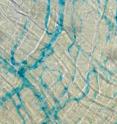Molecular mechanism of anaphylactic shock decoded
Researchers at Heidelberg University have found a molecular mechanism for anaphylactic shock. The activation of specific proteins in the cell walls of small blood vessels plays an important role. Suppressing the respective genes protects mice from the potentially fatal reactions of the immune and circulatory systems (anaphylactic shock) without disrupting circulatory regulation. This paves the way for the development of new drugs for the treatment and prevention of anaphylactic shock. The study by Professor Dr. Stefan Offermanns, Medical Director of the Institute of Pharmacology at Heidelberg University, and his study group in cooperation with colleagues at the German Cancer Research Center in Heidelberg as well as at Frankfurt University and the Max Planck Institute in Bad Nauheim was published online in "The Journal of Experimental Medicine".
Anaphylactic shock is an acute, life-threatening allergic reaction, usually brought on by medication, insect stings, or other allergens, which has become more frequent in recent decades. In sensitized persons, the presence of the allergen leads to the release of various substances (mediators) from immune cells in the blood. These mediators, e.g. histamine or leukotriene, cause an abrupt drop in blood pressure, lowering of body temperature, arrhythmia, respiratory distress, and acute reactions in stomach, bowels and skin. The combination of reactions leads to the life-threatening situation known as anaphylactic shock.
The mediators develop their effect via so-called G protein-coupled receptors that are found on different body cells, among others, in the walls of blood vessels. They trigger signals in the cells that then cause the typical symptoms of an anaphylactic reaction. "In the genetic mouse model, we showed that surprisingly, selective suppression of the genes coding for the G proteins Gq and G11 in vessel walls protected the animals from the most severe anaphylactic reactions", stated Professor Offermanns. Now the road is open for developing and testing substances that could be used directly to inhibit the triggering mechanism.
Source: University Hospital Heidelberg
Other sources
- Molecular mechanism of anaphylactic shock decodedfrom Biology News NetFri, 30 Jan 2009, 11:07:30 UTC
- Molecular mechanism of anaphylactic shock decodedfrom Biology News NetWed, 28 Jan 2009, 20:07:06 UTC
